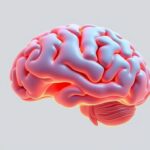Sound Relief: Innovative Technology Promises a Smoother Ride for Motion Sickness Sufferers
Motion sickness, that queasy, unsettling feeling that can turn travel into a dreaded experience, affects millions worldwide. From car journeys to boat trips and even virtual reality experiences, the symptoms – nausea, dizziness, and vomiting – can severely impact quality of life. But hope is on the horizon, thanks to a groundbreaking sound stimulation technology that offers a unique and potentially game-changing approach to alleviating motion sickness.
Understanding Motion Sickness: A Sensory Conflict
Motion sickness arises from a sensory mismatch within the brain. Our bodies rely on a complex interplay of visual input, signals from the inner ear (responsible for balance), and proprioceptive feedback from our muscles and joints to maintain a sense of orientation and stability. When these signals contradict each other, the brain becomes confused, leading to the characteristic symptoms of motion sickness.
For instance, imagine reading a book in a moving car. Your eyes are focused on the static words on the page, while your inner ear senses the motion of the vehicle. This discrepancy between what you see and what you feel triggers the body’s stress response, resulting in discomfort and nausea.
The Science of Sound: How Auditory Stimulation Can Help
The novel technology works by delivering carefully calibrated sound waves to the inner ear. This sound stimulation is designed to recalibrate the brain’s perception of motion and reduce the sensory conflict that triggers motion sickness. While the exact mechanism is still being investigated, researchers believe that the sound waves help to synchronize the signals from the inner ear, visual system, and proprioceptive system, leading to a more coherent and accurate perception of motion.
Unlike traditional remedies such as medication, which often come with side effects like drowsiness, this sound-based approach is non-invasive and aims to address the root cause of the problem by influencing the brain’s processing of sensory information. This could mean a significant improvement in comfort and well-being for those prone to motion sickness.
Testing the Technology: Promising Early Results
Early trials of the technology have yielded promising results, with participants reporting a significant reduction in motion sickness symptoms during simulated travel scenarios. These tests often involve placing individuals in rotating chairs or virtual reality environments designed to induce motion sickness. By monitoring physiological responses such as heart rate, skin conductance, and self-reported nausea levels, researchers have been able to objectively assess the effectiveness of the sound stimulation.
The initial findings suggest that the technology is particularly effective in reducing nausea and dizziness, the two most common and debilitating symptoms of motion sickness. Moreover, participants have reported feeling more comfortable and alert during and after the sound stimulation, indicating a potential for improved cognitive function and overall well-being.
Beyond Motion Sickness: Potential Applications in Other Fields
The potential applications of this innovative sound stimulation technology extend beyond motion sickness. Researchers are exploring its use in treating other conditions related to sensory processing and balance disorders, such as vertigo and age-related balance problems. Furthermore, the technology could potentially be adapted to enhance performance in athletes and pilots by improving their spatial awareness and coordination.
The ability to manipulate and influence brain activity through sound opens up a wide range of possibilities in fields such as rehabilitation, cognitive enhancement, and even mental health. As our understanding of the brain’s response to auditory stimulation deepens, we can expect to see even more innovative applications emerge in the years to come.
The Future of Motion Sickness Relief: A Brighter, Smoother Journey Ahead
This new sound stimulation technology represents a significant step forward in the fight against motion sickness. By addressing the underlying sensory conflict that triggers the symptoms, it offers a non-invasive and potentially more effective alternative to traditional remedies. As the technology continues to be refined and tested, it holds the promise of providing millions of sufferers with a smoother, more comfortable, and enjoyable travel experience. Imagine a world where car rides, boat trips, and even virtual reality adventures are no longer plagued by nausea and dizziness – a world made possible by the power of sound.
While further research and development are needed before this technology becomes widely available, the initial results are encouraging. With continued investment and innovation, sound stimulation could revolutionize the way we treat and manage motion sickness, opening up new possibilities for travel, exploration, and a more fulfilling life for all.


